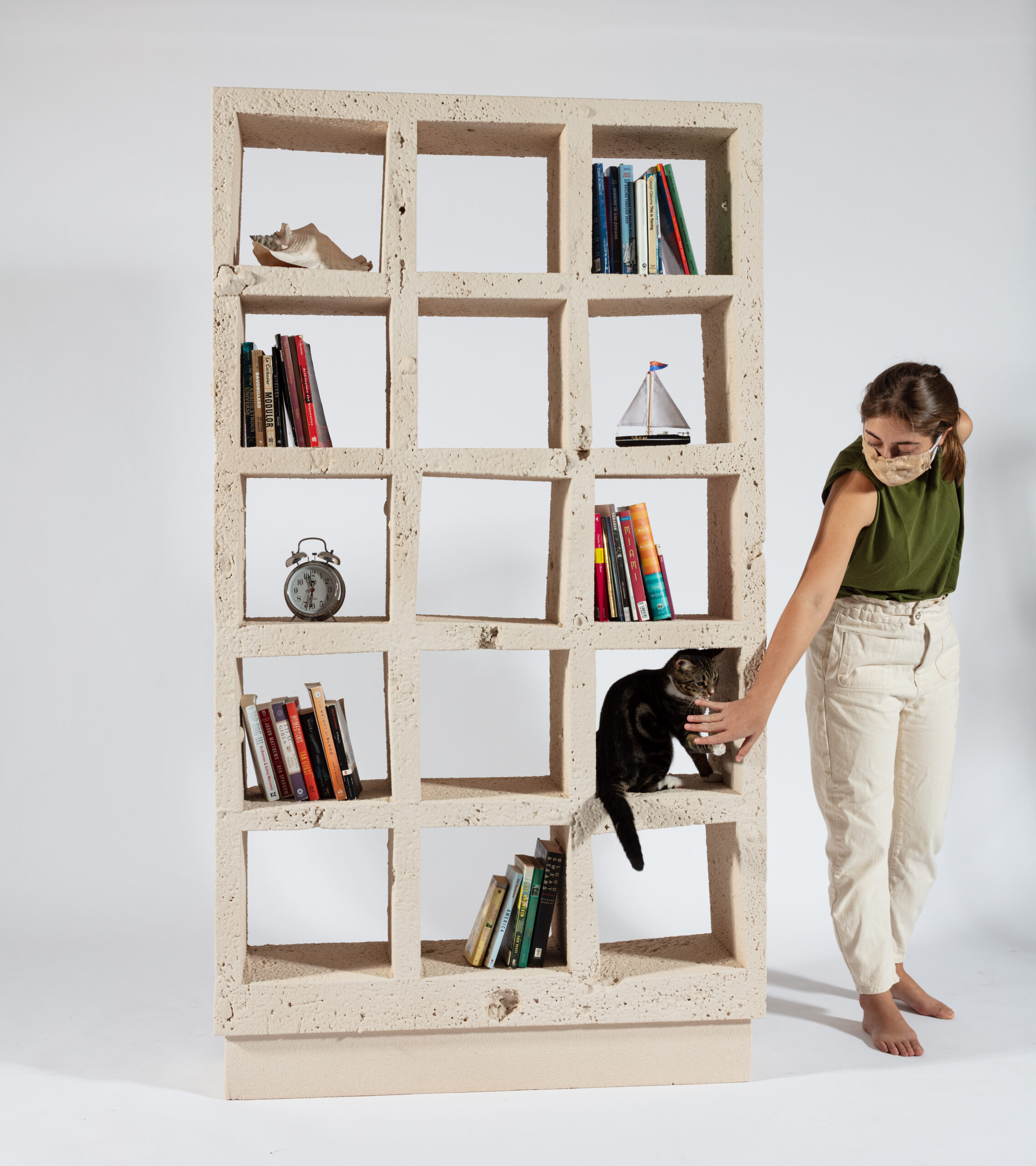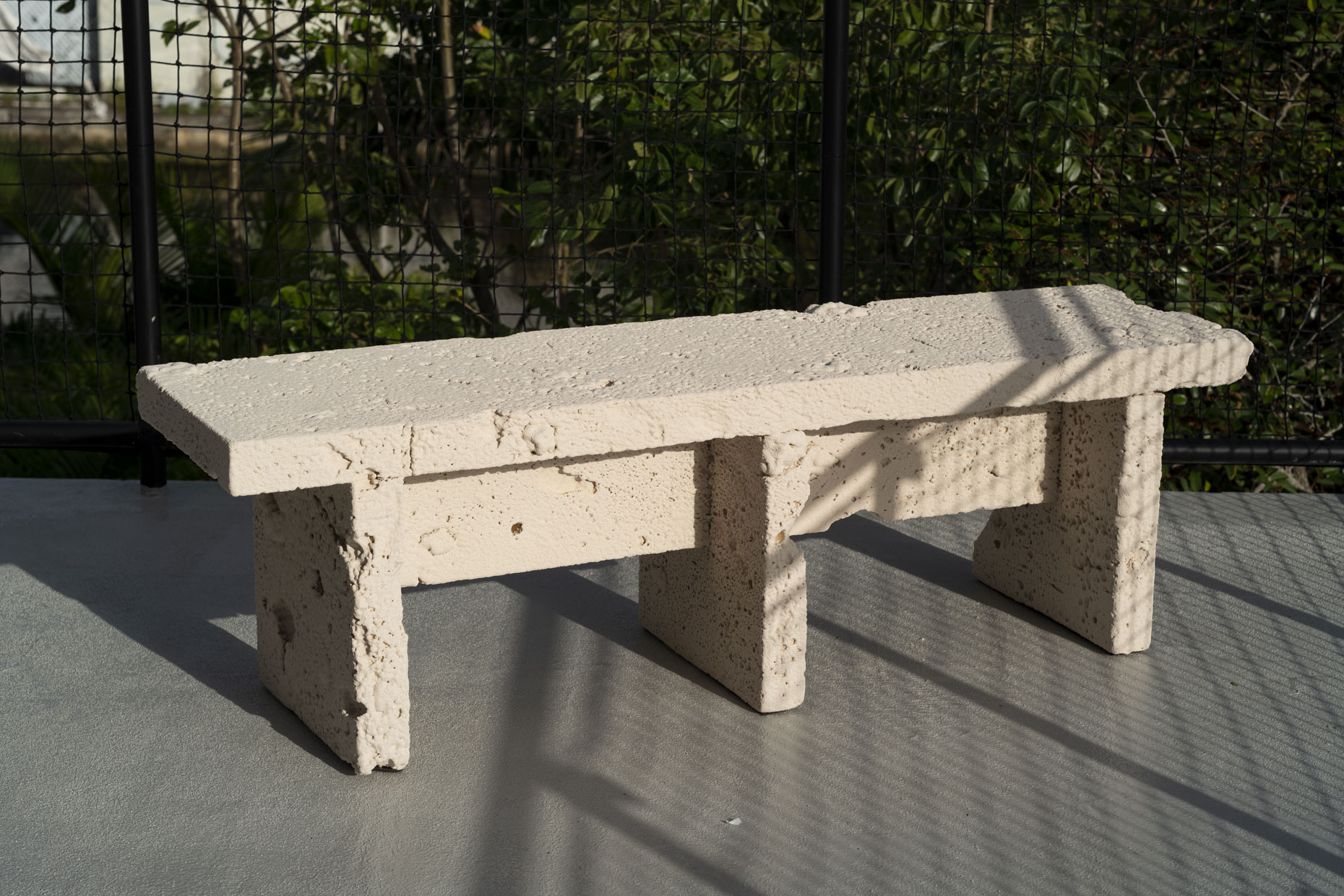Art Basel Miami 2020: climate change concerns dominate unusual year – featuring Emmett Moore

It’s usually that time of year when celebrities and art aficionados descend upon Miami for the city’s edition of Art Basel, a week of art fairs, parties and VIP guestlists. But this is no normal year.
Things have gone mostly digital (welcome to the viewing rooms), and with a surge in Florida’s rising Covid-19 cases, most of the events have been cancelled (though some socialites are still planning to party during the pandemic, which has caused understandable ire).
But for many of the artists, they have something more important to focus on. With Miami being one of the most vulnerable places to rising sea levels – it’s in the top 25 cities at high risk of coastal flooding – a number of public art projects and local exhibitions on view during the week shed light on the urgency of the Florida climate crisis, environmental art and climate change, at large.
“No matter what we do about carbon emissions, today or 20 years from now, seas will keep rising, and southern Florida will continue to flood worse every year,” said Elizabeth Rush, author of a book about climate change called Rising: Dispatches from the New American Shore.
The Miami artist Emmett Moore is opening the doors to his house boat on the bank of the Miami River until 6 December (only open by appointment), as part of an off-site exhibition with Nina Johnson gallery. Moore is showing recent sculpture and furniture design, made of recycled materials, like a bookshelf made of coral rock, and tables made from local cypress trees.
“In Miami, we’re in between the swamp and the Atlantic Ocean; there’s water underneath us in the aquifer, and it rains a lot, so we have water coming at us from every angle,” Moore said. “I think sea-level rise and the impacts of climate change are ever-present on my mind, and it comes out in my work. I think any solutions will be abstract and multi-faceted, so it’s important for me and other locals to address, discuss, learn, and imagine ways of dealing with the issue.”
Over at the Pérez Art Museum, artist Felice Grodin has created four site-specific, digital artworks that can be viewed via augmented reality on the museum’s app, for her piece called Invasive Species. “The artworks depict species and environments 500 years into the future, but we know at this point that the present, especially with regards to the environment, will have an immense effect on the future,” said Grodin.
“Climate change is real, and we don’t really know what those changes will be. I hope people understand the potential extremity of climate change, and the effect it will have on both humans and non-humans.”
Meanwhile, the Aim Biennial is showcasing an outdoor installation by N Masani Landfair featuring a collage and poem addressing water pollution in Miami’s Biscayne Bay, called leaf letter / undulate (we are Water / all Water connects). The artwork draws attention to the septic system in Miami, as septic tanks need to be replaced every 25 years.
“These tanks eventually rust out, leak into and contaminate the surrounding waters through the ground waters,” said Landfair. “This work is a gentle reminder that we still have time to change habits and understand how to live sustainability for future generations; to understand the power of water and move with it.”
One city-wide public art project is Save Art Space’s Miami 2020, where 10 artists show their artwork on bus-stop ad spaces in the Wynwood district, including a piece by Luz “Liight” Angel, whose created a painting about honoring the planet.
“There is usually a marriage of human, animal and nature present in my work to express the need of understanding that we are all linked, and that we can grow stronger as we reinforce that bond,” said Angel in a statement.
There’s also sculpture on Faena Beach by Cuban artist Alexandre Arrechea, called piece Dreaming with Lions which looks at the struggles of 2020 through the lens of Ernest Hemingway’s The Old Man and the Sea. Among the literary quotes used in this artwork, one reads: “A man can be destroyed but not defeated.”
At Artechouse, there’s an exhibition that taps into ocean pollution. Pantone’s color of the year, Classic Blue, is used for a digital piece that brings socially distanced viewers into an underwater-like space. One of the installations was created by the Miami artist Haiiileen (Aileen Quintana) for a piece entitled Agua Haiii.
“The narrative on this exhibition is about blue and water and is based on the diffraction of light in the ocean,” said the artist. “The piece makes you think about a clean ocean, something positive when thinking about anything ocean-related.”
Meanwhile, the city of Miami Beach features No Vacancy, a public art project featuring 10 artists taking over spaces at local hotels, which have gone from glamorous hotspots to lonely sites, as of late. Some of the environmentally focused artwork include Coral Morphologic, a project that livestreams the Port of Miami’s underwater marine ecosystem, and Olafur Eliasson’s Earth Speakr, an audio project featuring voices of our global youth (17 and under), sharing their views on the future of the planet.
Another exhibition connecting local voices with global issues is Contemporary Visual Expression, a group show with the Little Haiti Cultural Complex. The Haitian-born artist Morel Doucet addresses climate gentrification, migration and south Florida’s black diaspora in his work on view.
“Over the past decade, developers have been aggressively gentrifying Miami’s neighborhoods of Little Haiti, Overtown, Allapattah and Liberty City for elevation and land value, which causes displacement of residents due to rising rents and property tax,” said Doucet. “As a result, these communities are changing rapidly. Black bodies cease to exist with the threat of climate-gentrification.”
It doesn’t stop there. While wealthy areas, like Miami Beach, are taking out bonds to raise roads and install flood pumps, there are many other communities at more risk of rising sea levels.
“It teaches us that a city is an ecosystem, and it can’t go on functioning when you only protect the most well-off citizens,” said Rush. “Places like Shorecrest and Hialeah, where most of the population is Hispanic or Latino, are being hit the hardest now. They’re receiving little in the way of help, and being at risk, it makes us all vulnerable, and the sooner we learn that lesson, the more likely we are to respond to climate change as both a threat and an opportunity multiplier.”
In the meantime, next year’s Miami art week is already being planned. An underwater public sculpture park called the ReefLine is planned to launch, which will feature artworks that doubly function as artificial reefs for endangered fish, aiming to strengthen biodiversity.
Spearheaded by the BlueLab Preservation Society, there will be an artwork by Argentinian artist Leandro Erlich, while another will be a labyrinth-like staircase designed by architect Shohei Shigematsu, who says the project “draws attention to, and mitigates the dangers of climate change in Miami Beach, which enriching the city’s vivid art scene”.
